
|
“On the Water” Proposal Wins 2007 Latrobe Prize Study of New York Harbor serves as model for bay development
Guy Nordenson, professor, structural engineering, Princeton University School of Architecture and founder of Guy Nordenson and Associates, New York, was delighted to receive the Latrobe Prize. “The appeal of the project to the College of Fellows is the same as its appeal to the team, which is a chance to bring architects, engineers, and others together to think about the possibility of using the challenges associated with climate change as a way to rethink the character of the waterfront, in particular the New York Upper Bay, but also by extension other similar regions around the country.” According to the proposal, there is an opportunity to recognize the bay as a water-bound “Central Park,” a “common ground that can be a meeting place and cross roads on the water” through greening the land parallel to the water with parks, increasing water-based transit such as ferries, and continuing to develop waterfront residential and commercial building. For many waterfront areas lining the bay, post-industrial damage and transportation hubs have prevented development. The “Central Park” concept proposes a “waterfront reflecting the interplay of the built and natural environment.”
In the plan, the team proposes to:
Nordenson, who is also involved in the New York City Art Commission that reviews projects on city property, cites a promising redevelopment project for an old waterfront Navy base on Staten Island, along the southern end of the harbor. “The design for the waterfront is a combination of wetlands and boardwalks. It’s a good example of where one can take a soft and a hard approach to the [waterfront] edge that is compatible. “I imagine one of the things we will find is what the characteristics of a water body in a place like that can be, because at the moment it doesn’t really have a strong character.”
The study also plans urban water systems research, “what if” GIS-based mapping disaster mitigation analyses, intra-coastal waterways studies, ecological studies of migration corridors, and multi-media video works on the New York/New Jersey waterfront history and its current conditions. What advice does Nordenson have for architects planning to build on the waterfront? “Stay tuned.” |
||
Copyright 2007 The American Institute of Architects. All rights reserved. Home Page |
||
news headlines
practice
business
design
Recent related
› West Harlem Waterfront Park New York, New York
› One New York State: Urban Policy and Regional Design
› Down on the Blue Bayou
The recipients of the Latrobe Prize were professor Guy Nordenson, with Stan Allan, Catherine Seavitt, AIA, and James Smith, Princeton University; Michael Tantala, Tantala Associates; and Adam Yarinsky and Stephen Cassell, Architecture Research Office.
Daniel Friedman, FAIA, Latrobe Award jury chair, praised professor Guy Nordenson and his team for their “On the Water” proposal: “Professor Guy Nordenson and his expert team propose to reconceptualize the relationship between infrastructure and ecology in the 21st century waterfront city. Global warming and climate change provide a sobering backdrop for this ambitious analysis of urban systems. In its complexity and magnitude, upper Hudson Bay provides the ideal case study, one we believe will yield significant insights and innovations of immediate benefit to hundreds of coastal cities around the world.”

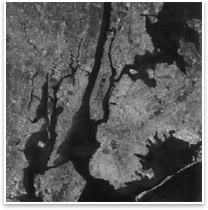
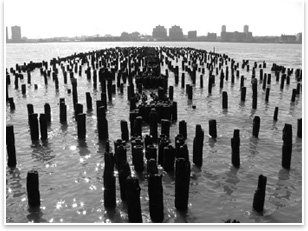 Central Park on the water
Central Park on the water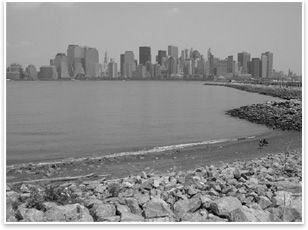 But to conceive this concept, rising sea levels caused by global warming, changes in precipitation, and increasing storms need to be addressed. The weather phenomena, plus global pollutants, will affect the shorelines’ soil, water, vegetation, and wildlife, all in turn affecting future design decisions for livability and recreation.
But to conceive this concept, rising sea levels caused by global warming, changes in precipitation, and increasing storms need to be addressed. The weather phenomena, plus global pollutants, will affect the shorelines’ soil, water, vegetation, and wildlife, all in turn affecting future design decisions for livability and recreation.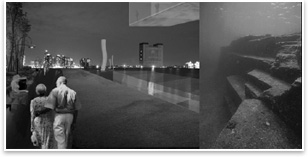 Soft and hard approach to waterfront flooding
Soft and hard approach to waterfront flooding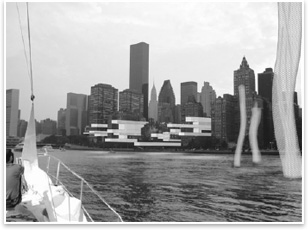 Project will serve as a stimulus for more research
Project will serve as a stimulus for more research